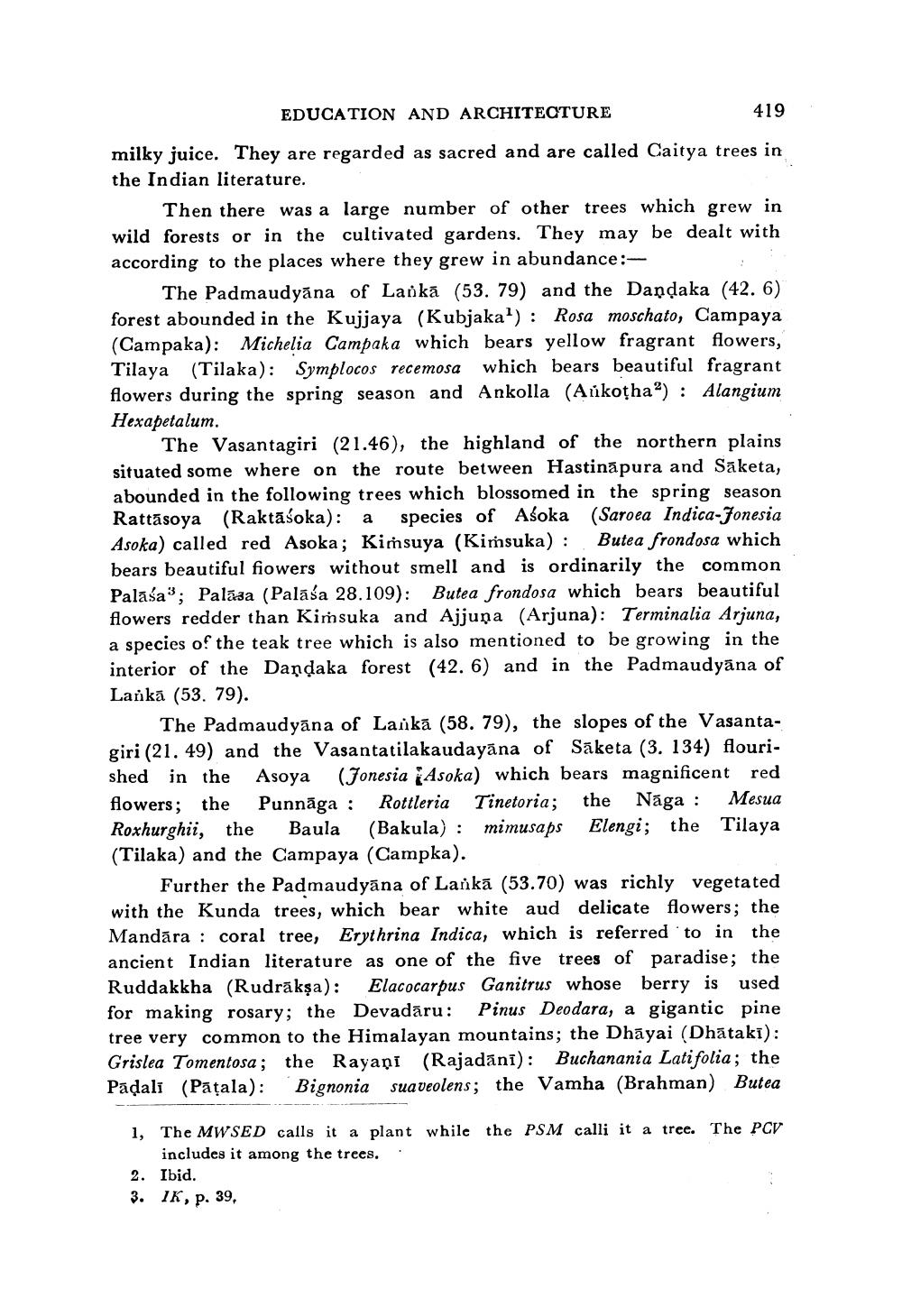________________
EDUCATION AND ARCHITECTURE
419
milky juice. They are regarded as sacred and are called Caitya trees in the Indian literature.
Then there was a large number of other trees which grew in wild forests or in the cultivated gardens. They may be dealt with according to the places where they grew in abundance:
The Padmaudyana of Laikā (53. 79) and the Dandaka (42. 6) forest abounded in the Kujjaya (Kubjaka) : Rosa moschato, Campaya (Campaka): Michelia Campaka which bears yellow fragrant flowers, Tilaya (Tilaka): Symplocos recemosa which bears beautiful fragrant flowers during the spring season and Ankolla (Aukotha) : Alangium Hexapetalum.
The Vasantagiri (21.46), the highland of the northern plains situated some where on the route between Hastināpura and Sāketa, abounded in the following trees which blossomed in the spring season Rattāsoya (Raktāśoka): a species of Asoka (Saroea Indica-Jonesia Asoka) called red Asoka; Kimsuya (Kirsuka): Butea frondosa which bears beautiful flowers without smell and is ordinarily the common Palasa", Palasa (Palása 28.109): Butea frondosa which bears beautiful flowers redder than Kimsuka and Ajjuna (Arjuna): Terminalia Arjuna, a species of the teak tree which is also mentioned to be growing in the interior of the Dandaka forest (42. 6) and in the Padmaudyäna of Laikā (53. 79).
The Padmaudyāna of Laikā (58. 79), the slopes of the Vasantagiri (21. 49) and the Vasantatilakaudayāna of Sāketa (3. 134) flourished in the Asoya (Fonesia Asoka) which bears magnificent red flowers; the Punnāga : Rottleria Tinetoria; the Naga : Mesua Roxhurghii, the Baula (Bakula) : mimusaps Elengi; the Tilaya (Tilaka) and the Campaya (Campka).
Further the Padmaudyāna of Lankā (53.70) was richly vegetated with the Kunda trees, which bear white aud delicate flowers; the Mandāra : coral tree, Erythrina Indica, which is referred to in the ancient Indian literature as one of the five trees of paradise; the Ruddakkha (Rudrāksa): Elacocarpus Ganitrus whose berry is used for making rosary; the Devadāru: Pinus Deodara, a gigantic pine tree very common to the Himalayan mountains; the Dhāyai (Dhātaki): Grislea Tomentosa; the Rayani (Rajadāni): Buchanania Latifolia; the Padali (Patala): Bignonia suaveolens; the Vamha (Brahman) Butea
1, The MWSED calls it a plant while the PSM calli it a tree. The PCV
includes it among the trees. 2. Ibid. 3. IK, p. 39,




